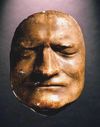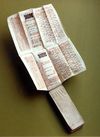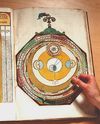The Crawford collection at the Royal Observatory Edinburgh : Visit our collection with the Google Street View Virtual Tour
virtual tour photography by : Leonardo Gandini
Please contact the librarian directly, by email if you wish to view the collection and the librarian will be happy to organise a group or individual viewing: please note there is a maximum number of 10 people in the room at any one time. For any other queries, use the contact details here.
The Crawford Collection of books and manuscripts at the Royal Observatory Edinburgh, one of the most extensive and valuable astronomical libraries in the world, was the gift of James Ludovic Lindsay, 26th Earl of Crawford (formerly Lord Lindsay) in 1888. Lindsay was a distinguished amateur astronomer who set up a private observatory on the family’s country estate at Dun Echt, Aberdeenshire, in the north of Scotland, in 1872. He appointed David Gill (later Sir David, Her Majesty’s Astronomer at the Royal Observatory at the Cape of Good Hope) as Director, with whose help he furnished it with a set of astronomical instruments from the best opticians in Europe. Inspired by his father, the 25th Earl of Crawford, a leading bibliophile and book collector, Lord Lindsay also assembled at Dun Echt a magnificent library of astronomical books and manuscripts.
Dun Echt Observatory flourished for almost twenty years but, in 1888, on learning that Scotland’s modest Royal Observatory, Calton Hill, in the centre of Edinburgh was under threat of closure Lindsay, now 26th Earl of Crawford, saved the day by magnanimously donating the entire contents of his observatory including its by now priceless library to the nation. The whole was housed in a new Royal Observatory building, completed in 1896, which remains the home of Edinburgh astronomy with Edinburgh University’s IfA (Institute for Astronomy) and, the UKATC (United Kingdom Astronomy Technology Centre).
In collecting his specialist library, Lord Lindsay used as his guide Otto Struve’s catalogue of the famous library of the Imperial Observatory at St Petersburg (Pulkova), at that time the greatest scientific library anywhere. He received the best possible counsel in this from Pulkova’s Director, Otto Struve, from whom he also took close advice on equipping his observatory. Within ten years, Lord Lindsay - who on the death of his father in 1881 became Lord Crawford - had amassed a library of 11,000 books, forming one of the great scientific collections of the world.
The task of cataloguing the Crawford library was undertaken by Ralph Copeland, Director of Dun Echt Observatory at the time of its transfer to Edinburgh, who had a deep scholarly knowledge of the Collection as well as being a close personal friend of Lord Crawford. Copeland became Astronomer Royal for Scotland and Professor at the University of Edinburgh and thus accompanied the instruments and its library to its purposely designed new building. Copeland’s Catalogue was published in 1890. Lord Crawford’s formal connection with astronomy ceased with the opening of the new Royal Observatory.
H. A Brück
H. A. Brück [7th Astronomer Royal for Scotland] described the most precious items in the Collection in his Story of Astronomy in Edinburgh:
The library contains the first editions of nearly every book important in the history of astronomy and related fields. It is especially rich in early literature on comets [a collection of over 1000 tracts, described as unrivalled anywhere, including 19th century observations in which Lord Crawford had a special interest] and there are many treatises on astrology. The pre-Copernican period of astronomy is represented by the earliest printed edition of 1478 of Sacrobosco’s (John Holywood’s) Sphaera Mundi; by a near perfect copy of Apianus’ Astronomicum Caesareum of 1540, with working planispheres; and by many other volumes. There is a beautiful copy of Copernicus’ De Revolutionibus Orbium Coelestium of 1543 with annotations by Erasmus Reinhold who was Professor of Astronomy in Martin Luther’s University at Wittenberg from 1536 to 1553.
There is a copy of Reinhold’s Tabulae Prutenicae of the motions of celestial bodies calculated on the basis of Copernicus’ De Revolutionibus. The Collection also contains a copy of the first edition of 1627 of Kepler’s Tabulae Rudolphinae, which superseded Reinhold’s and remained the standard astronomical tables for more than a century. Amongst the many Kepleriana in the Collection mention may be made of Kepler’s pamphlets on the new star which appeared in 1604, and of his famous book Harmonices Mundi which was published in 1619. The Collection’s copy holds within its covers an autograph sheet by Kepler, being part of a contract and specification for a hydraulic engine. There is also a copy of Kepler’s Astronomia Nova, printed in 1609 and containing Kepler’s well-known first two laws of planetary motion which he established from Tycho Brahe’s observations from the motion of the planet Mars. Tycho Brahe’s own publications are very well represented, starting from his observation of the Nova of 1572 to the description of his instruments in Astronomiae Instauratae Mechanica of 1602.
The Collection’s many books by Galileo include a fine copy of his Sidereus Nuncius of 1610, with his observations of Jupiter’s satellites amongst others; a copy of Istoria e Dimistrationi of 1613, with his earliest drawings of sunspots; and Il Saggiatore of 1623, a well-known piece of his controversial writing. The Collection’s editions of Isaac Newton’s Principia Mathematica include the first edition of 1687, with an imprimatur by Samuel Pepys, then President of the Royal Society, and the third edition of 1726 with Newton’s portrait by Vanderbank. Amongst mathematical treatises in the collection are some thirty editions of Euclid. These include the first Latin edition (Venice 1482), the very rare Paris edition of 1516, the first Greek edition (Basle 1533), the first English edition (London 1570) and the first Arabic edition (Rome 1594). Of particular Scottish interest are the Collection’s treatises on logarithms by Baron Napier of Merchiston. They include his announcement of their discovery and his first logarithm table which he published in 1614 under the title Merifici Logarithmorum Canonis Descriptio.
Sample images from the Crawford Library
Click on the small images to display a larger version
A cast of the face of Sir Isaac Newton was made at his death in 1727. The original, now owned by the Royal Society, was probably sculpted by J.M.Rysbrack (1693?-1770). This plaster copy, which is numbered "44", is a Victorian relic and was donated to the Observatory in 1883, by the Misses Wallace the daughters of Professor Wallace who was Professor of astronomy & mathematics at Edinburgh University.
Newton was born at Woolsthorpe in Lincolnshire, England on 25 Dec 1642. He studied at Trinity College, Cambridge from 1661 until 1665/6 when the university closed due to the plague. His most famous work is the The Principia [the Crawford Library holds a first edition (1687) and a third edition (1726)] where he discusses universal gravitation. In 1696 he was appointed Warden, then later, Master of the Mint and, in 1703, he became President of the Royal Society.
Brilliantly gilded assembly of vellum pieces that fold up into a small pouch to be carried on a girdle (or belt). A perpetual calendar, it would work year after year for approximate positions of the Moon or the date of Easter. The almanacs appear to have been used in astrological medicine - images of the 'Zodiac Man' accompany calendar and lunar data.
Peter Bienewitz, known as Apianus (1495-1552), was Professor of Mathematics at Ingolstadt and 'Imperial Mathematician' to the German [Holy Roman] Emperor Charles V. He was the first to use darkened glass for observation and recognised that the tails of comets always point away from the Sun. His Astronomicum Caesareum, a beautifully illustrated exposition of Ptolemaic astronomy, was the last major work on astronomy to be published before the appearance of Copernicus' De Revolutionibus. It included a section on comets which contained a description of Halley's Comet on its return in AD 1531.
Begins: Henach sagt es von den newn Cometen...
A miscellany of articles relating to the computing of the calendar, articles of medical interest and others mainly concerned with the influence of the planets on human affairs. The drawing of an astronomer at his desk heads a chapter seeking to explain the distinctions between the heavens and the firmament and is one of many lively coloured illustrations to be found throughout the item. The volume was composed in Bavaria in the second half of the fifteenth century and belonged at one time to the Convent of Discalced Hermits of St Augustine in Vienna.
For more information on items in the collection, please see the National Library of Scotland's digital version of the Crawford catalogue.




